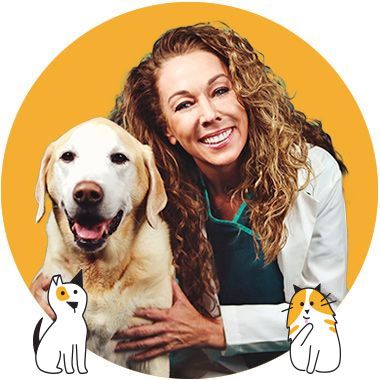Missing These Red Flags Now Could Make You Very Sorry Later
Common inherited disorders and diseases often send out early warning signs. If you know what to look for now in your small, medium, or large breed, you might save yourself heartbreak and your pet's unnecessary suffering later. Clues to look for in nine popular breeds or mixed breeds.

STORY AT-A-GLANCE
- The majority of purebred dogs, regardless of size, are genetically predisposed to certain disorders and diseases
- Mixed breeds can also develop inherited disorders
- It can be very helpful for owners to learn about the disorders that are common in their dog’s breed
- In holistic veterinary medicine, there are steps that can help prevent or slow the progression of disease
- When an inherited disorder can't be prevented or appears suddenly, if the owner knows ahead of time what to look for and seeks immediate veterinary care, the dog often has a much better outcome
Editor's Note: This article is a reprint. It was originally published March 9, 2016.
As most dog guardians know, the majority of purebred dogs are genetically predisposed to certain disorders and diseases. Mixed breeds can also inherit a tendency to develop conditions that affect the dominant breeds in their lineage.
Common Diseases in Three Popular Small Breeds
- Yorkshire Terrier — The darling little Yorkie is especially prone to portosystemic shunt (liver shunt), which compromises the blood flow to and through the liver. Liver shunts can be inside the liver (intra-hepatic) or outside it (extra-hepatic), which is the type most often seen in Yorkies and other small breeds.
The liver's job is to distribute protein so the puppy can grow, and also to detoxify the blood. A puppy with a shunt will show signs of toxicosis from central nervous system depression, with symptoms that can include vomiting, diarrhea, lethargy, seizures, and failure to thrive.
Fortunately, extra-hepatic shunts can usually be easily fixed with surgery, which is the best option when the condition can't be medically managed and the dog's quality of life is affected. - Chihuahua — Chihuahuas are tiny dogs with big personalities. This breed is prone to several disorders involving the head, including hydrocephalus.
Hydrocephalus is a painful condition involving abnormal accumulations of spinal fluid in the brain that can cause increased cranial pressure, convulsions, tunnel vision, and other problems.
Chihuahuas are often born with a molera, which is a soft spot in the skull. Moleras are not a birth defect, but rather a normal adaptation that facilitates passage through the birth canal and growth and development of the pup's domed forehead.
The molera fills in as the Chi ages, but until that happens, great care must be taken so as not to injure the pup's skull. Some moleras never close completely. - Maltese — The adorable Maltese, like other small breeds, is prone to patellar luxation, a condition also known as floating kneecap in which the kneecap doesn't seat snugly in the groove and can pop out of place. In small dogs, the kneecap tends to pop out medially, or to the inside.
The Maltese is also prone to a condition known as Little White Shaker Syndrome. The disorder involves inflammation in the cerebellum and causes full body tremors. It primarily affects small white dogs.
Common Diseases in Three Popular Medium-Sized Breeds
- Boxer — These lively, entertaining dogs are unfortunately predisposed to a number of serious health problems, including cancer. One type of cancer prevalent in Boxers is mast cell tumors. Mast cells are found in all tissues of the body, especially in the skin, respiratory tract, and gastrointestinal tract.
Another cancer commonly seen in Boxers is lymphoma, which describes a group of cancers that originate from lymphocytes (white blood cells).
Lymphoma can invade any organ in the body, but it most often affects organs that are part of the immune system such as bone marrow, the spleen, and lymph nodes. - Bulldog — These precious dogs, like all breeds with flat faces, typically suffer from brachycephalic airway syndrome — a result of their very short muzzles.
Bulldogs often have very narrow upper airways that make it difficult for them to breathe. The problem is worse in hot weather and after exercise, and can lead to a life-threatening emergency.
Bulldogs are also prone to skin problems, as well as two disorders more common in large breeds: hip dysplasia and bloat. - Beagle — This wonderful breed is prone to epilepsy, which is a brain disorder that causes seizures that tend to first appear in Beagles between the ages of 6 months and 3 years.
Beagles are also predisposed to develop hypothyroidism, and like many floppy-eared dogs, frequent ear infections.
Common Diseases in Three Large/Giant Breed Dogs
- Doberman Pinscher — The handsome Dobie is prone to Wobbler syndrome, which is a disease of the cervical spine in the area of the neck, in which the spinal cord and its nerve roots are compressed.
The compression causes neck pain and neurological symptoms, such as the wobbly walk the syndrome is named for.
In Dobermans, Wobbler's typically presents as slipped discs, and affected dogs tend to develop the disease in middle age — 6 to 7 years old is average.
Male Dobies may also have an increased risk for diseases affecting the prostate, including prostatic cysts, prostatic adenocarcinoma, bacterial prostatitis, and benign hyperplasia. - Standard Poodle — This highly intelligent breed is genetically predisposed to Addison's disease, which primarily affects females between the ages of 4 and 7. Addison's disease, also known as hypoadrenocorticism, is a condition in which the adrenal glands produce fewer corticosteroid hormones than the body requires.
Symptoms of Addison's can appear suddenly and be quite severe, or they can happen on and off with varying levels of severity. They include weakness, depression, loss of appetite, vomiting, diarrhea, and increased thirst and urination.
As a deep-chested breed, the Standard Poodle is also prone to bloat, or gastric dilatation-volvulus (GDV). In GDV, the stomach fills up with gas and air, and then twists around on itself, squeezing off the blood supply and setting the stage for serious injury to other internal organs.
GDV is a life-threatening emergency. It's critically important that a pet who is suspicious for GDV be seen by a veterinarian immediately. - Great Dane — The great big Great Dane is prone to a number of health problems related to his size, one of which is a heart disease called dilated cardiomyopathy. In fact, these dogs are sometimes called the "heartbreak breed."
Dilated cardiomyopathy (DCM) describes a diseased heart muscle that doesn't contract or pump efficiently. As the disease progresses, the heart chambers become enlarged, heart valves may leak, and congestive heart failure can develop.
Great Danes are also prone to blindness and deafness, which is often the result of the merle gene. When a dog is born with two copies of the gene, he or she has a high risk for deafness, blindness, or other serious eye problems.
Canine Genetic Disorder Databases
If you're interested in learning more about inherited diseases in dogs, there are a couple of online resources you should find useful:
- Canine Inherited Disorders Database (CIDD) is a good resource for dog guardians with a pet diagnosed with an inherited disease, and prospective dog parents who want to learn about the inherited conditions of certain breeds.
- The Inherited Diseases in Dogs (IDID) database is provided by the University of Cambridge Veterinary School, and users can search by selecting a breed or genetic anomaly (inherited disorder), or by typing in a keyword. This database also contains references to peer-reviewed scientific literature for further research.
It can be very helpful for owners to be aware of the disorders that are common in their dog's breed (or breeds, in the case of mutts). Especially in holistic veterinary medicine, there are steps we can take to prevent or slow the progression of disease. When an inherited disorder can't be prevented or appears suddenly, if the owner knows ahead of time what to look for and seeks immediate veterinary care, the dog often has a much better outcome.











